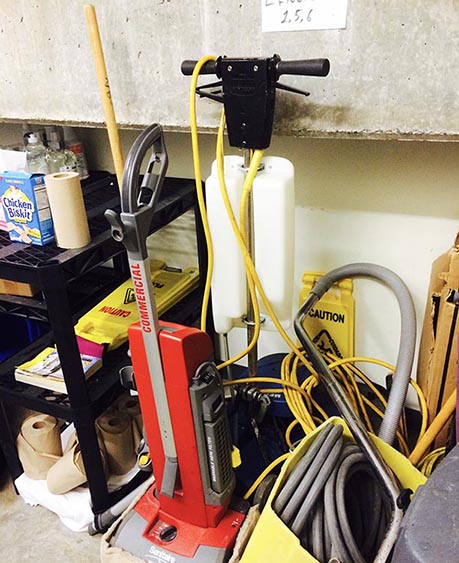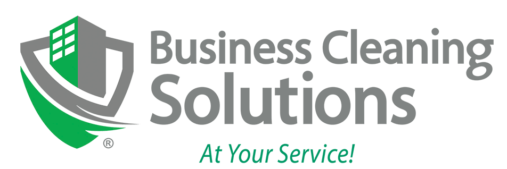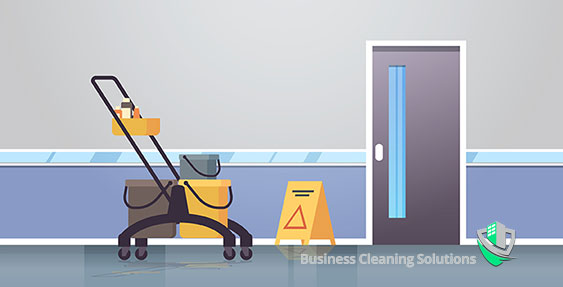Have you looked into your company’s janitorial closet lately? We mean really look? Was it dirty or difficult to access? If so, that’s a problem. After all, the cleaning staff aren’t the only ones utilizing the paper supplies or service sink. Poorly managed custodial closets can easily become a cluttered, dysfunctional mess. Maintaining organized janitorial closets for better facility management is one of our favorite subjects! The fact is, keeping closets in good working order should be a team effort. Any responsible cleaning company should be your partner in this process.
Ever spend 15 minutes navigating a messy garage seeking out a single tool? We feel your pain. Imagine that a customer’s dog has suddenly made a mess in your lobby…you’ve got to address the issue…and fast. Only, you find the janitorial closet is packed. There’s empty cardboard boxes. The sink can’t be reached and none of the bottles have labels. Scary, right? Friends don’t let friends keep dysfunctional janitorial closets. This post will break down why.
The federal authority on safe workplace environments is the Occupational Safety and Health Administration (OSHA). Surprisingly enough, they don’t require training on housekeeping. Well-trained cleaners who know the reasons why a tidy workplace is important will be more diligent in their efforts.

Why an Organized Janitorial Closet Matters
Have you looked inside your company’s janitorial closet lately? If it’s cluttered, hard to access, or dirty, you might have a bigger problem than you think. A well-organized janitorial closet is essential for keeping cleaning supplies easy to find and ensuring your cleaning staff can work efficiently. It also helps prevent safety hazards like spills, tripping risks, and chemical mix-ups. Whether you manage an office, school, or commercial building, organizing a janitorial closet should be a top priority.
What is a Janitor’s Closet
A custodial closet or janitor’s closet is a storage space used to hold cleaning equipment, chemicals, and cleaning supplies. The closet usually consists of shelves, storage bins, and sometimes a janitor’s sink. Custodial staff uses these closets to easily grab what they need and keep cleaning activities running smoothly. When this space becomes cluttered or disorganized, everything takes longer and safety issues arise.
Janitor’s Closet Meaning & Purpose
A janitor’s closet is not only a storage closet; it is the nerve center of all cleaning activities. When well controlled, it enables cleaning personnel to:
- Locate supplies easily without wasting time.
- Keep chemicals secure in order to avoid accidents.
- Keep clean and dirty tools separate from each other to ensure hygiene.
- Keep the floors dry and avoid slips by organizing mops and wet floor signs adequately.
How to Organize a Janitor Closet
1. Declutter and Remove Unnecessary Items
Yes, some janitorial closets are smelly and off-putting. As such, it may never have occurred to you how vital an asset they are. Vendors such as plant care services may need access to the water on a routine basis. Day porters may pull from the inventory of bathroom supplies. In older buildings the water heater and even electrical panels may be located inside of these closets. Many people may come and go throughout the business day. When maneuverability becomes a challenge this can impede getting a simple job done, which can frustrate. People will toss things aside and shove them wherever it’s convenient. Good luck finding that carpet stain remover!
Start by removing all outdated, empty, or broken cleaning supplies. Get rid of things that don’t belong in the closet, such as old rags, unmarked bottles, or personal belongings. Keeping only what is necessary makes the space more efficient.
OSHA has requirements for walking and working surfaces (1910.22). This includes the inside of your maintenance and janitorial closets. These rule consists of the following:
- Cleaning areas are to be clean, orderly, and sanitary.
- Floors must be kept clean and dry.
- Aisles and passageways must have sufficient clearance. They are to be kept clear, without obstructions that could create a hazard.
2. Use Shelving and Storage Bins
- Install sturdy shelves to keep cleaning products off the floor.
- Use clear bins or labeled containers to store small items like sponges and gloves.
- Hang mops and brooms on wall-mounted holders to prevent them from becoming tripping hazards.
- Keep large items like vacuums and buckets in a designated spot.
3. Label Everything
Unlabeled bottles full of mystery cleaning product…pink, green, blue, what? This is a hallmark of poorly managed business cleaning and a pet peeve with us at BCS. Cleaning chemicals left open? Missing lids? Or do they look like they came from an impromptu trip to Albertsons or the Dollar tree. Not good(!) The OSHA Hazard Communication Standard (HCS) (29 CFR 1910.1200(g) sets the guidelines for SDS Safety data sheets. The SDS includes information such as the properties of each chemical; the physical, health, and environmental health hazards; protective measures; and safety precautions for handling, storing, and transporting the chemical.
- All cleaning products should have clear labels with safety instructions visible.
- Store chemicals in their original containers and keep them properly closed.
- Label shelves so staff can quickly identify where things go.
- Keep a printed checklist inside the closet to remind staff of organization rules.
- SDS (Safety Data Sheets) should be stored on-site in the chemical storage area.
Remember that even green cleaning products can be toxic. More caustic chemicals are sometimes utilized when removing difficult things like mineral buildup from faucets. That’s why it’s important to know what’s being stored in your facility.

4. Maintain a Cleaning Schedule for the Closet
- Set a routine for checking and restocking supplies.
- Make sure spills and leaks are cleaned up immediately.
- Assign someone to inspect the closet weekly to keep it tidy.
The Importance of a Janitor Closet Sink
Many janitor’s closets include a utility sink, also called a service sink. This sink is essential for tasks like:
- Filling and emptying mop buckets.
- Rinsing cleaning tools like mops and cloths.
- Properly disposing of dirty water to prevent contamination.
How to Keep the Janitor Closet Sink Clean
- Avoid letting trash or food get into the sink.
- Rinse the sink daily to prevent buildup of grime and cleaning chemicals.
- Keep cleaning cloths and mop heads separate to avoid cross-contamination.
- Store detergents and chemicals away from the sink area to reduce the risk of spills.
Safety Tips for a Custodial Closet
OSHA (Occupational Safety and Health Administration) has guidelines for keeping workplaces safe, including janitorial closets. Here’s what to keep in mind:
- Floors should be dry to prevent slipping hazards.
- Chemicals should be stored according to safety guidelines.
- There should be enough space to move around easily.
- Emergency equipment like fire extinguishers should never be blocked.
Insider tip: you have every right to periodically peak into your maintenance closet and audit what you see. Proactive facility management keeps your cleaning company honest and allows you to get a snapshot of how organized they are. As you give your closet an honest assessment, consider asking your cleaning company the following questions:
- Would it be helpful to install more storage shelves or cabinets?
- Are there any areas where food and beverages should be prohibited?
- What is the scope of work for keeping the closet clean?
Final Thoughts on Organizing a Janitorial Closet
A well-organized janitorial closet makes cleaning faster, safer, and more effective. Keeping it clutter-free, labeling everything, and maintaining a cleaning schedule ensures your janitorial staff can work efficiently. By paying attention to how your janitor’s closet is set up, you create a better, safer environment for everyone in your facility.
Start by decluttering, installing shelves, and maintaining a routine cleaning schedule. A little effort goes a long way in keeping your janitorial closet neat and functional!
We hope this post can help get you started on thinking about organized janitorial closets for better facility management. For more information, contact one of our service consultants today.
- Better organization makes things easier to find
- It’s easier to notice trash, refuse, or broken items that are no longer of any use
- Less clutter reduces fire risk
- You have a lower risk of injuries from slips, trips, or falls
- Fewer health hazards such as touching or inhaling poorly stored and labeled chemicals.


